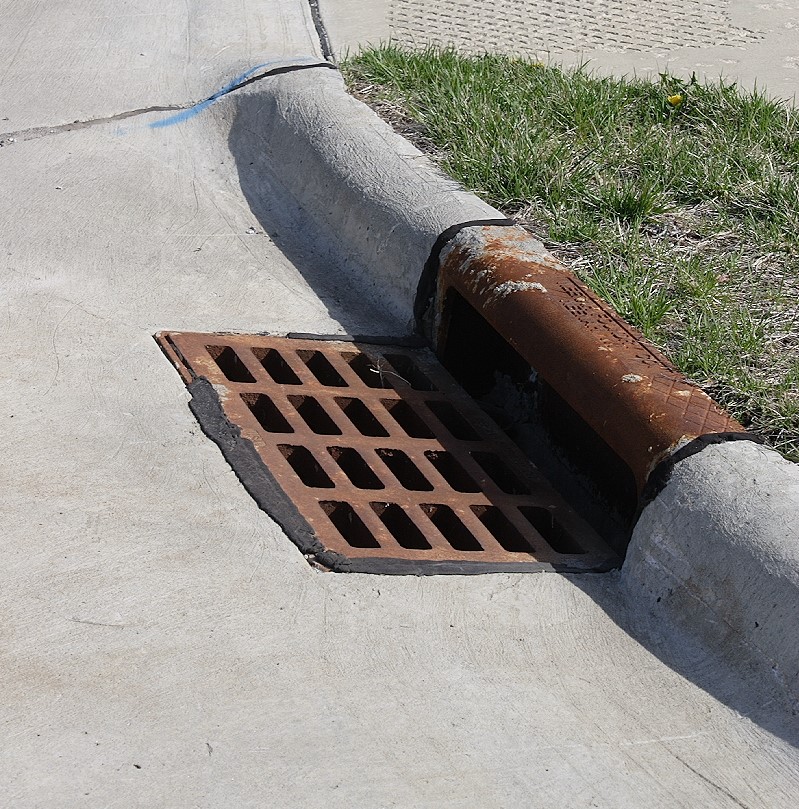A curb and gutter system refers to a combined concrete structure where the vertical curb and the horizontal gutter are cast as a single unit. Instead of having a standalone curb and a separate drainage ditch, the curb and gutter form a continuous boundary along roads, parking lots, or driveways.
These systems serve several important functions. They provide edge definition and containment, holding the asphalt or paving material in place and preventing lateral spreading. They manage drainage by channeling stormwater away from pavements and properties, reducing pooling or flooding. They improve safety by guiding vehicles and preventing encroachment off the pavement. They also add aesthetic appeal and durability, giving projects a finished look while protecting pavement edges from damage.
Because they combine both structural and drainage roles, curb and gutter systems are a standard feature in roadway design, municipal streets, commercial properties, and residential developments. Proper design, installation, and upkeep are critical to their long-term performance.
What Curb and Gutter Services Include
Curb and gutter services cover a wide range of work. Installation is the most common, which includes site preparation, grading, form setting, pouring concrete, finishing, and curing. Contractors also handle replacements, removing deteriorated curb and gutter sections and rebuilding them to meet current standards. Restoration services address cracks or minor damage through patching, sealing, and surface treatments.
Maintenance is another important part of these services. This includes inspections, debris removal, vegetation control, and proactive replacement of damaged areas. Drainage integration is often necessary as well, ensuring slopes are correct and runoff is properly directed to inlets or discharge points. A professional contractor can handle every phase, from design and permitting to installation and long-term maintenance, using DOT-certified concrete mixes and techniques that meet municipal codes.
Why Curb and Gutter Services Matter
Investing in quality curb and gutter work brings several benefits. Pavement edges are protected from cracking or breaking, which extends the lifespan of asphalt and concrete surfaces. Water is directed away from structures and roadways, preventing erosion, flooding, and costly water damage. Businesses and municipalities also reduce liability risks by keeping surfaces safer and more predictable for both drivers and pedestrians.
Compliance is another important reason. Many municipalities require specific curb and gutter designs that meet DOT standards. Proper work ensures your project passes inspection and avoids delays or fines. In addition, long-term costs are reduced because durable materials and expert installation limit the need for frequent repairs or premature replacements.
Choosing the Right Contractor
When hiring a contractor for curb and gutter services, experience is key. A company that has completed similar projects will understand the complexities of grading, drainage, and material selection. The quality of the concrete mix is equally important, and contractors should use certified materials that can withstand heavy use and harsh weather. It is also worth asking about warranties, maintenance programs, and compliance with local permitting requirements.
Contractors like Southern Asphalt Engineering, which has over two decades of experience in Miami-Dade and Broward, emphasize high-quality materials and end-to-end service. This approach helps ensure projects are not only built to last but also meet all regulatory standards.
Curb and Gutter Systems: Vital Part of Roadways
Curb and gutter systems are a vital part of roadways, parking lots, and commercial properties. They combine durability with function, protecting pavements, managing water, and keeping projects compliant with regulations. By working with an experienced contractor who uses quality materials and proper installation methods, you can ensure your curb and gutter system provides long-term value and performance.
FAQs about Curb and Gutter Services
What determines where gutters should be placed?
Gutters are placed at low points or where stormwater naturally flows to direct runoff safely away from the pavement.
What is involved in a new curb and gutter installation?
The process includes grading and preparing the subgrade, setting forms, pouring concrete, finishing the surface, adding joints, and curing the structure.
How can existing damage be repaired?
Minor cracks and spalls can be patched with epoxy or polymer compounds, while more severe damage often requires saw cutting and partial replacement.
What materials are used for repairs?
Polymer-modified concrete, epoxy, and polyurethane grout are common materials, chosen based on durability and compatibility with the existing structure.
How do contractors ensure long-lasting results?
Durability comes from proper site preparation, high-quality concrete mixes, correct slope design, and consistent maintenance.
Are there codes that apply to curb and gutter systems?
Yes, municipalities and DOTs require specific profiles, slopes, widths, and materials, and contractors must follow these standards.
How often should curbs and gutters be inspected?
An annual inspection is recommended, especially after major storms, with maintenance performed as needed to extend the lifespan of the system.
